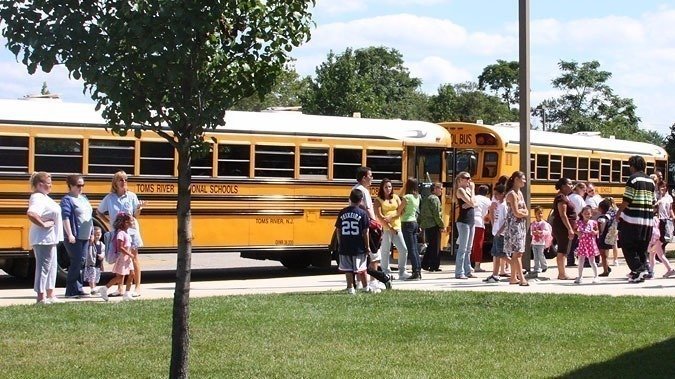
TOMS RIVER – Looking at having virtual education for at least two months, Toms River Schools laid off 240 non-teaching staff members.
The layoffs include 90 bus drivers, five bus mechanics, 25 special education bus aides, 70 cafeteria/playground aides, and 50 cafeteria workers. Hourly and part-time employees were let go immediately while full-time employees will be paid through Nov. 1. The notice had to be sent contractually. It gives them 60 days to seek work.
These are all employees that have been paid since March when the schools started virtual education. The reduction in force was based on seniority. And when the schools reopen, rehiring will also be based on seniority.
“We’re going to need that staff back at some point,” Superintendent David Healy said.
When the district created the virtual plan, they had to submit a date to the state for a possible return. The date they gave is Nov. 9, Healy said. That date is contingent on whether the virus gets worse or better. If coronavirus cases drop, a hybrid model will be introduced. If cases increase, the district is prepared to continue virtually.
“Even if it’s a hybrid, we’ll still need our bus drivers,” he said.
Toms River schools has the largest district-owned transportation department in the state, he said. The bus drivers laid off are not all of them. They still needed drivers for special education, vocational school, nonpublic school, and out of district placements.
Some cafeteria staff were retained to prepare food for students on free and reduced lunches.
These cuts come at the same time that Toms River is facing about $5.2 million less in state aid that it received last school year. And even last school year was a cut from the previous one. The state has reconfigured the aid that it sends to all districts. Toms River was one of the hardest hit locally, losing millions per year cumulatively. The logic behind this is that schools with decreasing enrollment lost aid while schools with increasing enrollment got more. However, the state has not shared the specifics in how each number was finalized.
Virtual To Be Different
The virtual experience will be different this year than in spring, Healy said.
In March, the schools were required to close. The district had some time to come up with a virtual alternative that he said was one of the best in the state. Now, the district has had months to fine tune what works and learn what doesn’t in order to present a virtual model that is more advanced than children are used to.
For example, there will be science labs, and the arts and physical education curriculum will be expanded. Technology and curriculum have been updated in the last six months to be as comprehensive as possible.
Students and parents will have access to a help desk and tutorials on how to work with the technology. The district is doubling its bandwidth to make sure that no one loses connections.
Parents shouldn’t dismiss virtual education as inferior, he said, noting that accredited universities have virtual programs. When it comes to younger children, they have been raised with technology always being within reach so they are likely to adjust to it well. The issue with the younger kids is attention span – much like in-person education. Therefore, breaks and change-ups in activities will keep their minds fresh and attentive.
Some students work well virtually and some will need more help, he said.
Like other districts, Toms River has teachers who were not able to return to classrooms due to medical or other hardships.
“Nothing has changed except that children aren’t in the classrooms,” he said.






